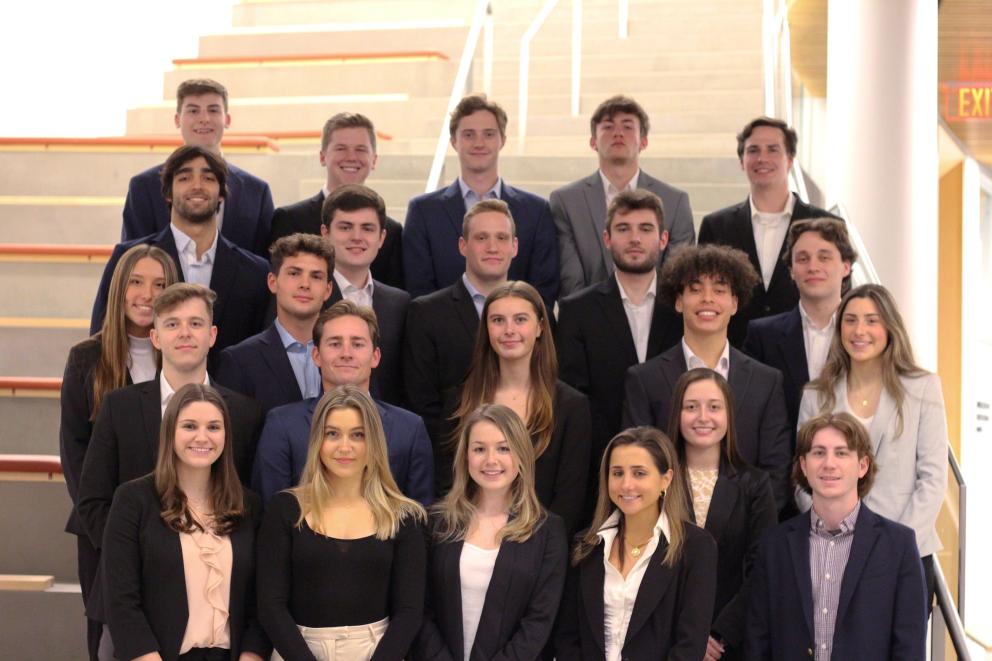The Isenberg Real Estate Advisors Club Works With Town of Orange
March 15, 2022

When Alec Wade, the community development director for the Town of Orange, needed a feasibility study for the South Main Street Job Creation Corridor—a project focused on promoting economic and commercial development through business and housing opportunities—the Isenberg Real Estate Advisors (IREA) club members jumped at the chance to use their expertise in a real-world context.
“We had the opportunity to visit the site towards the beginning of the project to get a better idea of what the area was like—the size, accessibility, etc.,” says Livia Coelho, a senior finance major and associate with the IREA who has been a primary player with the project. “During that site tour we were also able to speak to the airport manager. He explained to us some background on the airport itself as well as some FAA regulations we would have to take into consideration for the project.”

Coelho (pictured left) and six other club members went on to meet with the stakeholders, consultants, and regulators involved with the project to learn about FAA regulations, zoning and code compliance, and environmental impacts. All that information went into three phases of work, says Coelho. The first was to analyze current site conditions and area demographics. Second, they focused on existing capacity for the site. Finally, they outlined a final recommendation for the best use of the site along with a marketing plan.
“We have been assisting the town of Orange in its efforts to pursue grant funding to prepare this site for future development,” says Sean McElhinney, a senior finance major and IREA member who has worked on the project. “Our final 15-page report and presentation will be used to articulate project goals and development potential for the Orange Airport Commercial Park.”

During a virtual meeting this year with the town’s Selectboard, Wade—a UMass Amherst alumnus with a bachelor’s degree in sustainable community development and a master’s degree in community and regional planning—explained how the ongoing project had resulted in an expansion of commercial development permits, and he acknowledged the work of the IREA team: “They’ve been evaluating the availability of utilities, the capacity of water and sewer and in evaluating our building and construction requirements to consider what type of development could occur,” Wade was quoted as saying in the Greenfield Recorder newspaper.
The IREA is a student-run advisory firm, which gives students interested in real estate investments an opportunity to explore the professional aspects of the field.
“I was first introduced to the IREA in the fall of 2020, when they held their first Women’s Development Program,” Coelho says. “After learning more about what the club does and watching some members present their acquisition pitches, I was very intrigued and interviewed for the junior analyst position where I would begin to learn more about commercial real estate and get involved in the different client projects we get to work on.”
She has found the club and the Orange feasibility project to be rich learning experiences, and credits the IREA’s advisor, Jeffrey Clark, a lecturer in finance and real estate at Isenberg, with offering helpful perspective on the development potential of the area.
The team members produced the feasibility study for free, but say they gained valuable work experience from the project.
“One thing I learned is how much time, effort, and resources go into these public sector projects,” says Niko King, a sophomore finance major and club member. “But also, I saw how important real estate can be to the economy of such a small town. The sale of a plot of land can mean the difference to a lot of people when they can benefit from it in various ways, whether it be employment, economic growth, or more general attraction towards the area.”